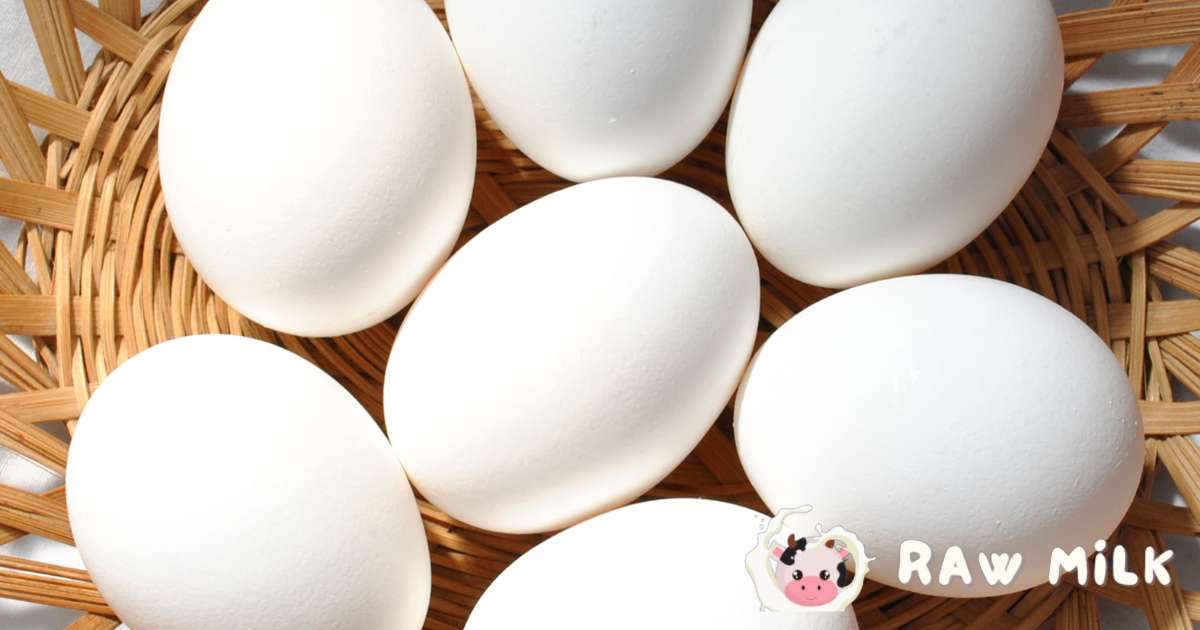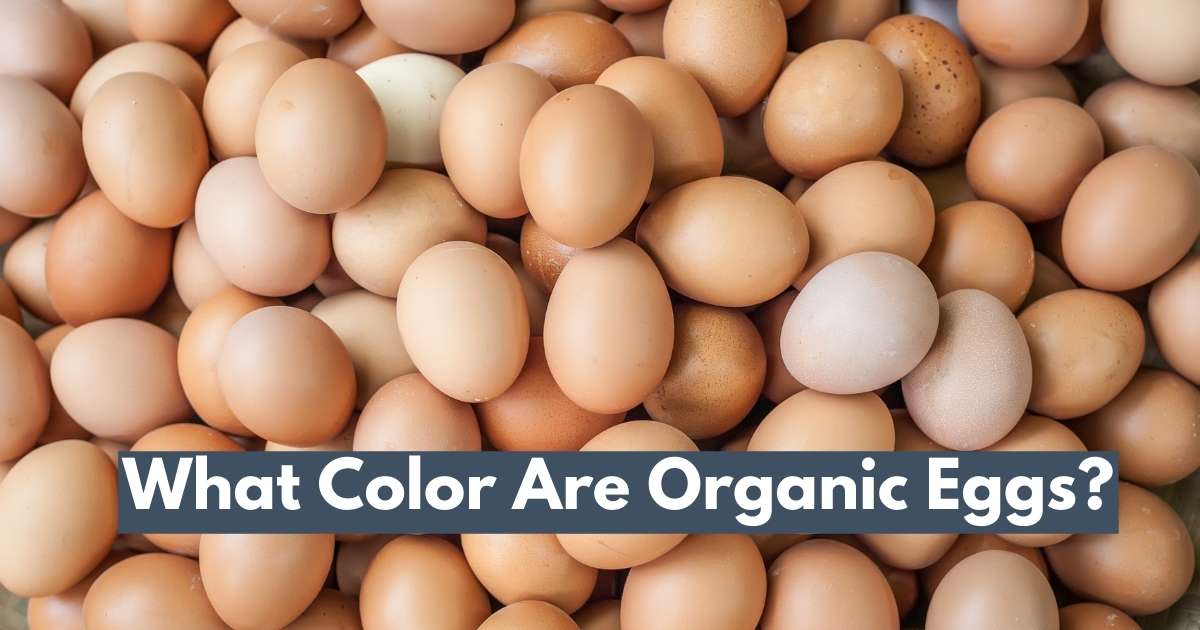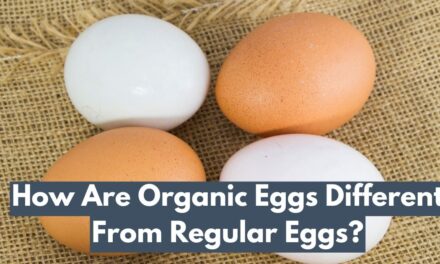People who care about their health like to buy organic eggs from hens raised on organic farms. The color of the eggshell is important to people when they decide which eggs to buy, but it doesn’t really tell you how good the egg is for you.
Some people think brown eggs are healthier or more natural, while others like blue or green ones better. Farmers and sellers need to know this so they can teach people what really makes eggs good, like how the hens are treated and how the farm works.
That way, people can make smart choices and help farms that take care of the environment.
Factors Influencing Egg Color
The color of an eggshell depends on different things, like the genes of the chicken and what it eats.
To delve deeper into how genetics and diet influence egg color, feel free to explore our page on how long organic eggs last.

Genetics of the Hen
Different kinds of chickens lay eggs of different colors. Some, like Ameraucanas and Araucanas, lay blue or green eggs, while others like Rhode Island Reds usually lay brown ones. This happens because of the genes in the chicken.
How Genes Affect Eggshell Color?
The color of an eggshell is decided by colors added to it while it’s forming. The chicken’s genes decide what colors get added and where, which then makes the eggshell the color it is.
Diet and Food
What a chicken eats also affects the color of its eggs. If a chicken eats food with lots of certain nutrients, like carotenoids from plants like marigold petals or alfalfa, its eggs will likely have richer yolks and maybe darker shells.
Natural Stuff in Food
Besides nutrients, things like herbs or certain grains in a chicken’s food can also change the color of its eggs. For instance, giving chickens flaxseed might make their eggs a bit darker because of the omega-3 fatty acids in the seeds.
Knowing about these things can help farmers and buyers understand why eggs come in different colors and make smarter choices about buying and selling them.
Differences Between Organic and Regular Eggs
Organic Farming Practices
Organic eggs come from farms that follow strict rules about what the hens eat and where they live. These rules say that hens must eat organic food without any antibiotics, hormones, or genetically modified stuff.
They also need to have outdoor space where they can roam around and eat natural food without pesticides. What the hens eat and where they live affects the color of their eggshells.

Impact on Eggshell Color
Because organic hens eat natural food and get to roam outside, their eggs might have slightly different colors compared to regular eggs. This is because their diet and environment are different.
If you’re interested in learning more about the availability of free-range organic eggs in Dubai, check out our page on free-range organic eggs in Dubai.
Regular Egg Production
Regular eggs often come from farms where hens eat food with synthetic additives, antibiotics, and hormones to help them grow faster and stay healthy. These additives can affect the nutrition of the eggs and their color.
Comparison of Egg Color
Although there might be some small differences in eggshell color between organic and regular eggs because of what the hens eat and where they live, the overall colors are usually similar.
But people who care about natural and organic farming might think organic eggs are better because they don’t have synthetic additives and focus on being environmentally friendly.
Understanding these differences can help people choose eggs based on what farming practices and qualities they prefer.
Most Organic Eggs Are Brown or White
Brown Eggs:
In organic farming, brown eggs are very common, though they’re not only found in organic farms. Many people think brown eggs are more natural or healthy, so they’re popular in organic markets.
Chickens in organic farms that lay brown eggs are usually breeds like Rhode Island Reds or Plymouth Rocks.

Factors Affecting Brown Shades:
The color of brown eggs can change based on a few things, like the type of chicken, what they eat, and the environment they’re in.
If chickens eat foods with certain nutrients, like carotenoids in plants like marigold petals or alfalfa, their eggs might be darker brown. Also, if chickens are stressed or not healthy, their eggshells might be a different color.
White Eggs:
White eggs are less common in organic farming but still exist. Some breeds of chickens, like Leghorns, lay white eggs, and some organic farmers choose to raise them along with brown egg-laying chickens to offer a mix of egg colors to customers.

Reasons for White Eggshells:
The color of eggshells in organic chickens, even white ones, is influenced by genetics, diet, and the environment. White eggshells might not be as common in organic farms, but they’re usually because of genetics, not what the chickens eat or where they live.
Knowing why eggs have different colors in organic farming can help people understand the natural variety and make choices about what eggs they prefer.
Different Colors of Eggs
Blue and Green Eggs
Some special types of chickens, like Ameraucanas, Araucanas, and Easter Eggers, lay eggs that are blue or green. These chickens are often raised organically, which means they are not given any chemicals or hormones.
The different colors of these eggs make them stand out from regular white or brown eggs. The chickens have special genes that make their eggs look this way, which can be interesting for people who like unique things.
What People Think about Different Colored Eggs?
Most people are used to eating white or brown eggs, so blue and green eggs might seem strange to them. Some people find these colorful eggs exciting and different, which can make cooking with them more fun.
However, others might not know much about them and may need to learn about why they look different and if they are healthy to eat.

Eggs with Spots or Light Colors
Sometimes, eggs have spots or come in colors other than white or brown. These eggs are also found in organic farms.
They can make egg cartons look more interesting and show that the chickens come from different backgrounds.
Why Some Eggs Look Different?
The spots or light colors on eggshells can be because of many things, like the chicken’s genes, how old the chicken is, or the weather when the egg was made. Some types of chickens are more likely to lay eggs with spots or light colors.
The environment where the chickens live can also change how their eggs look. These different patterns on the eggshells make organic eggs look special and give people more choices.
Frequently Asked Question
Are brown eggs always organic?
No, brown eggs can come from chickens raised organically or conventionally. The color of the egg is determined by the type of chicken, not how it’s raised.
What does the color of the egg yolk indicate about its quality?
The color of the yolk can change depending on what the chicken eats. Darker yolks usually mean the chicken had a diet rich in nutrients like carotenoids. But just because the yolk is dark doesn’t mean the egg is better overall.
Are blue and green eggs always organic?
Yes, blue and green eggs can be organic. The color of the shell is based on the chicken’s genes, not how it’s raised.
Do organic eggs taste different from non-organic eggs?
Some people think organic eggs taste better, but it’s a matter of personal preference. The main difference is how the chickens are raised, not how they taste.
Why are some organic eggs more expensive?
Organic eggs cost more because it’s more expensive to raise chickens organically. Organic feed, letting them roam outside, and following strict organic rules all add to the cost.
Are organic eggs healthier than conventional eggs?
Organic eggs might have more nutrients because the chickens get to eat organic food and roam outside. But whether they’re healthier overall depends on what you need and like in your diet.
Can I raise my own organic eggs at home?
Yes, you can raise chickens at home for organic eggs. Just give them organic food, let them outside to find food, and follow organic rules. Make sure you check your local rules for keeping chickens at home.
Conclusion
Talking about why organic eggs have different colors, we’ve seen that things like genes, what the chickens eat, and where they live all affect the color of the eggs they lay.
Knowing this helps people understand why eggs can look different and helps them choose eggs that they like. The color of eggs is important to people when they’re picking which ones to buy, but it’s important to know that the color doesn’t always mean the egg is better.
It’s more important to know about how the chickens are taken care of and how the eggs are made. Teaching people about these things helps them make better choices.
In the future, it’s important for organic egg farmers and people who buy organic eggs to keep caring about how the eggs are made and how the chickens are treated.
By supporting organic farming, we help protect the environment and make sure there’s good food for the next generations.










